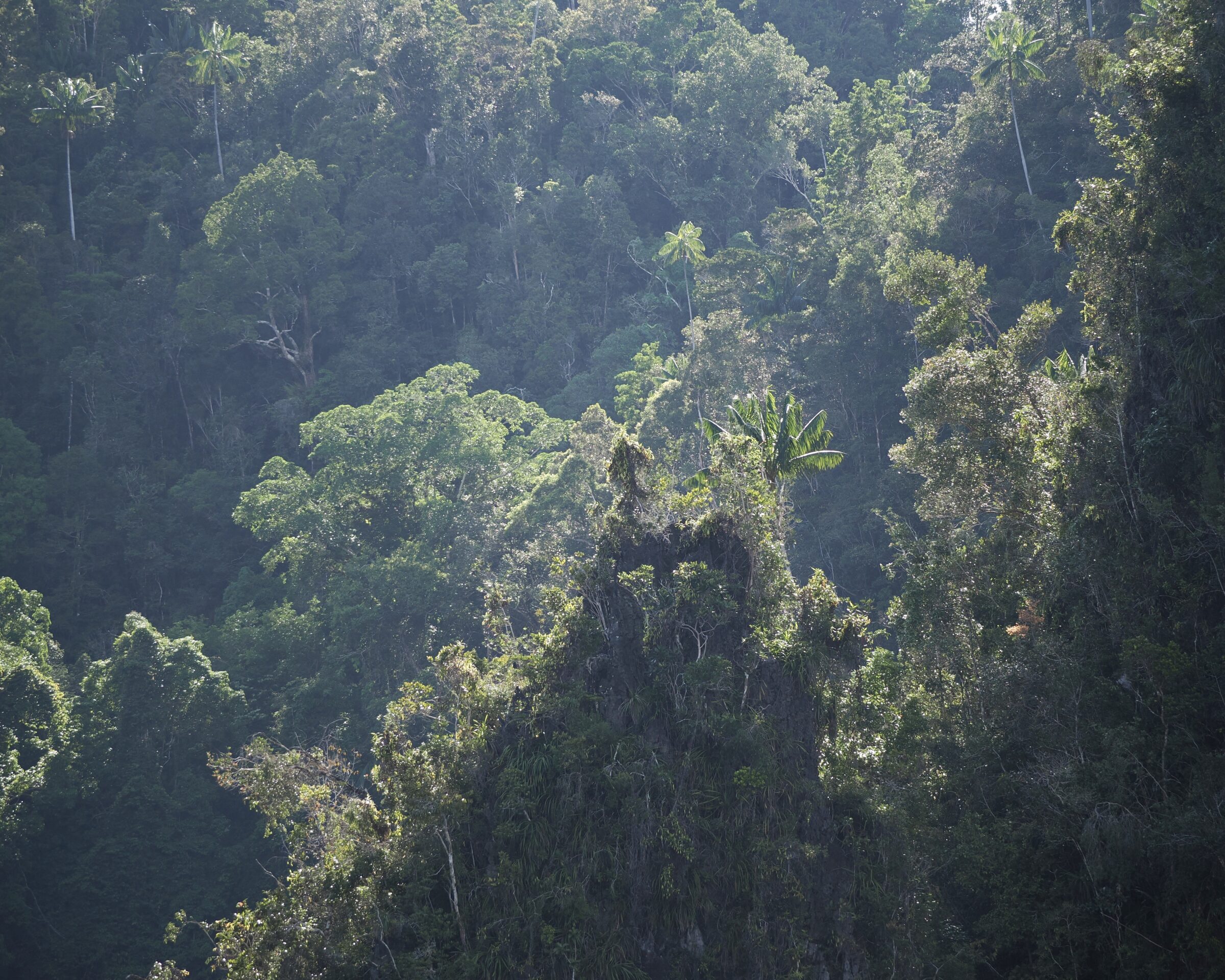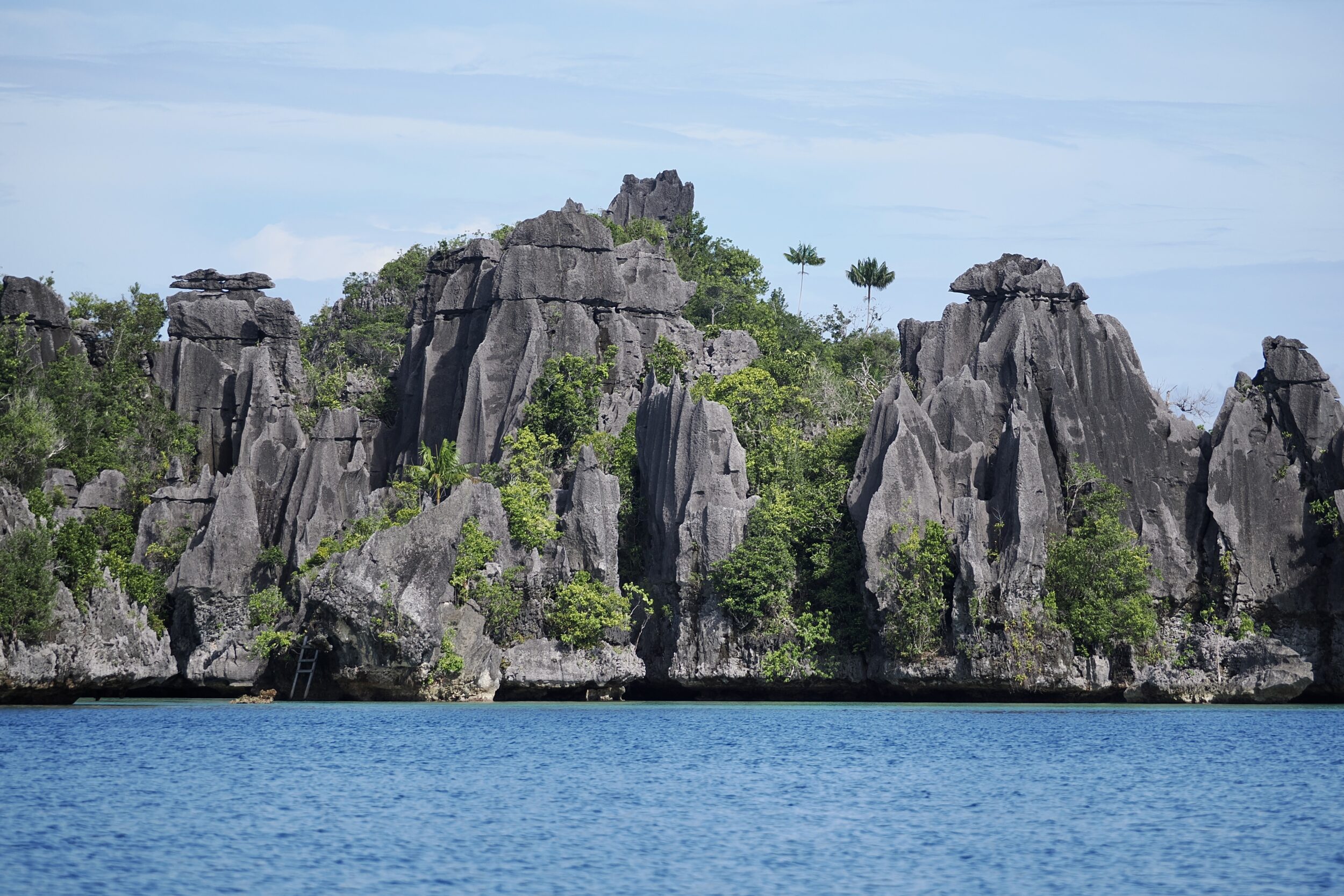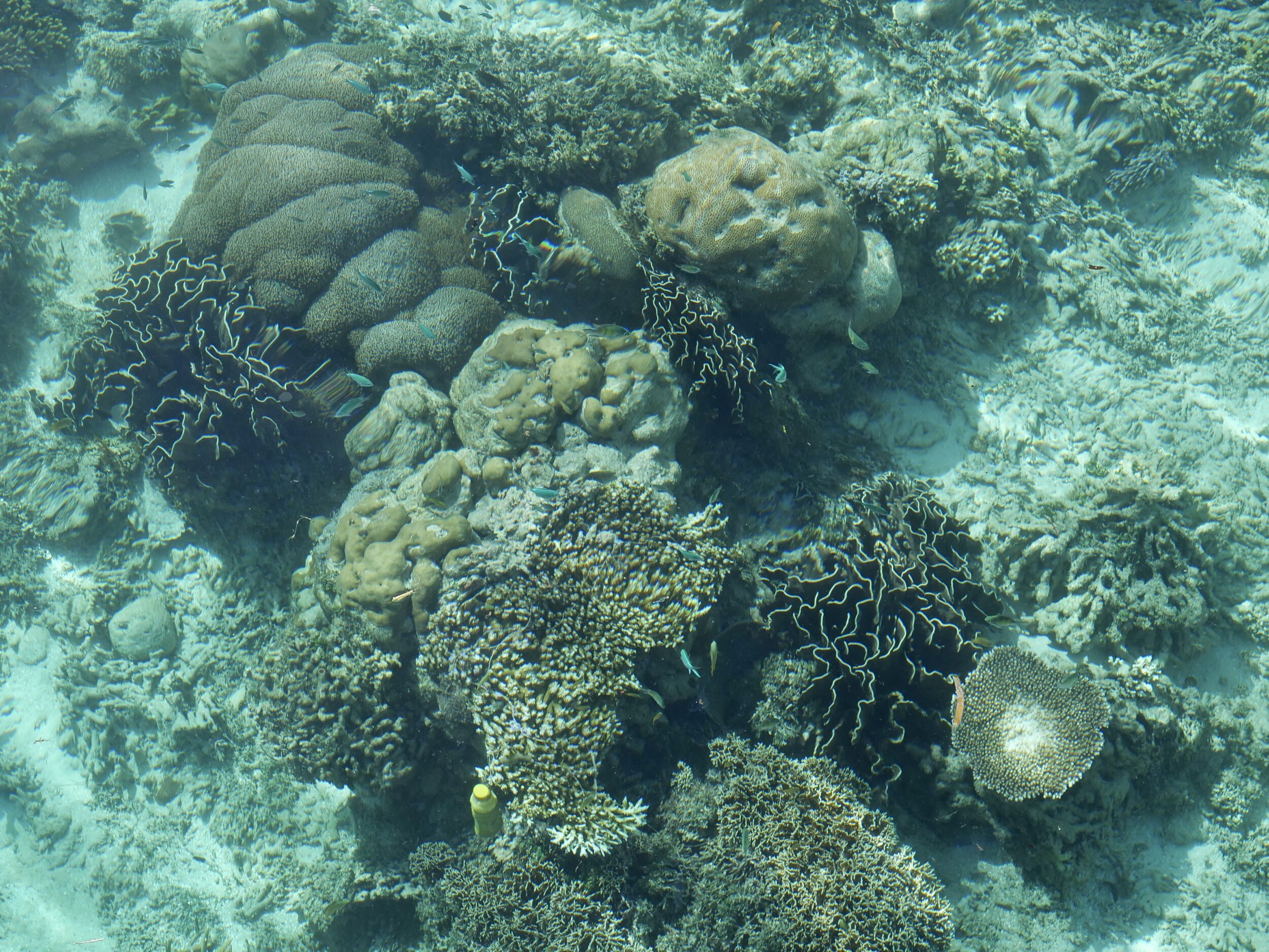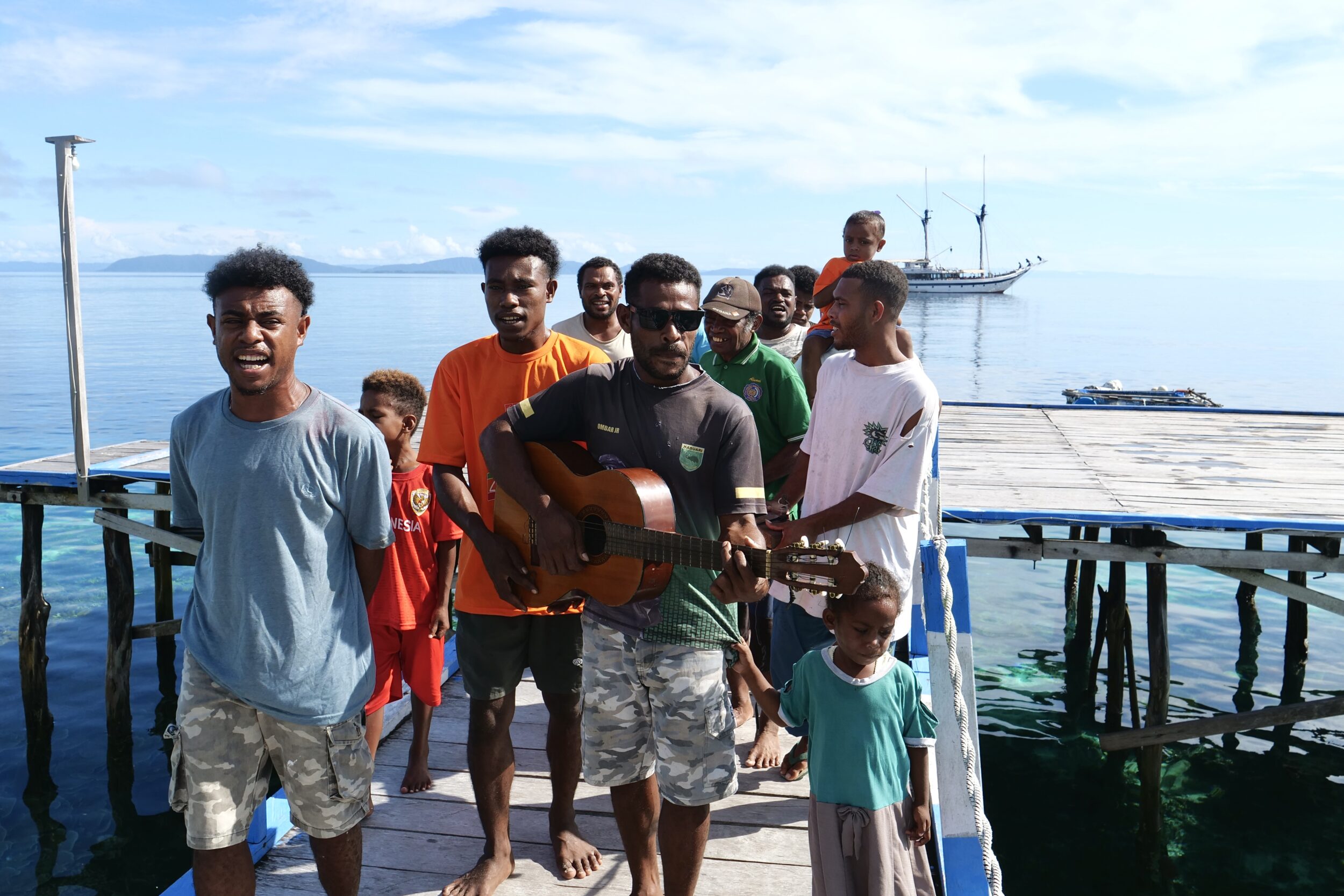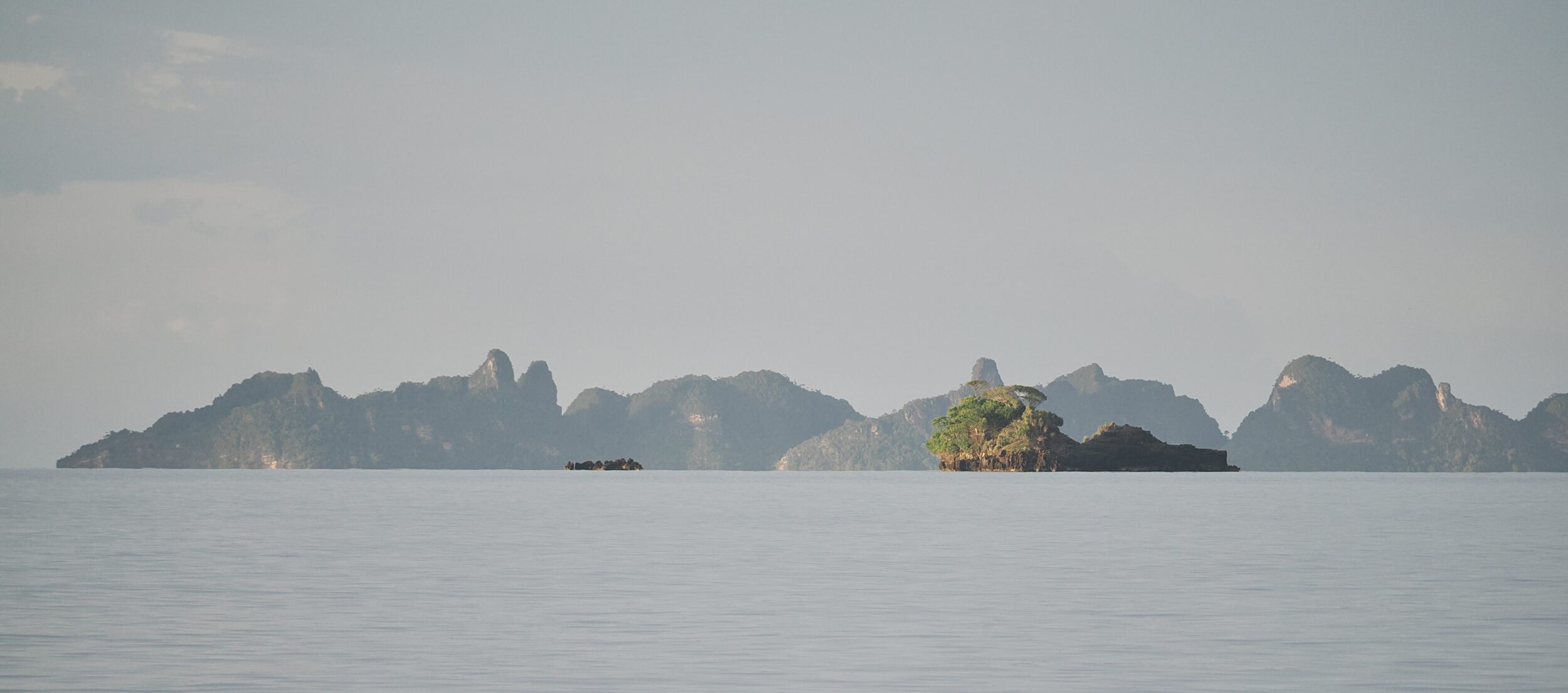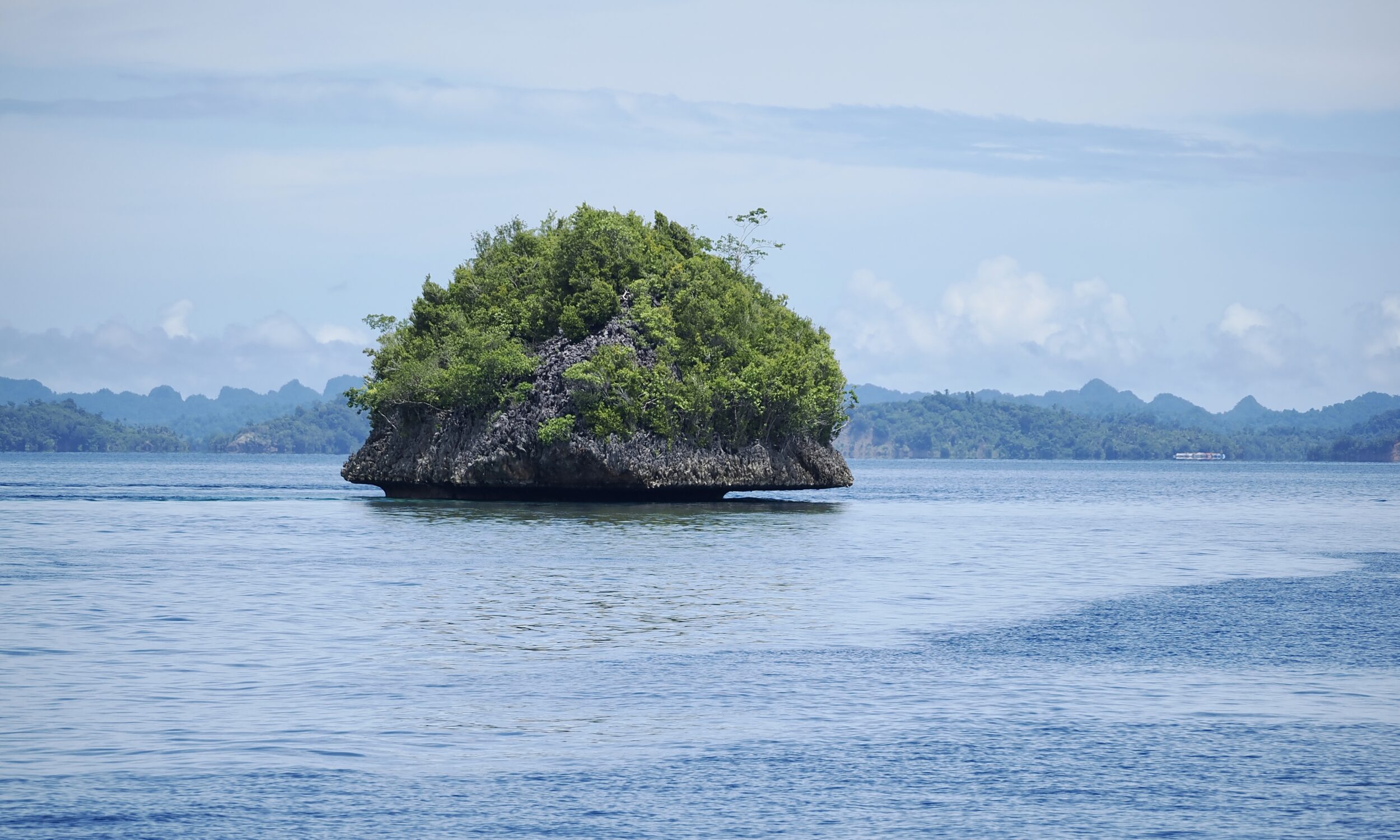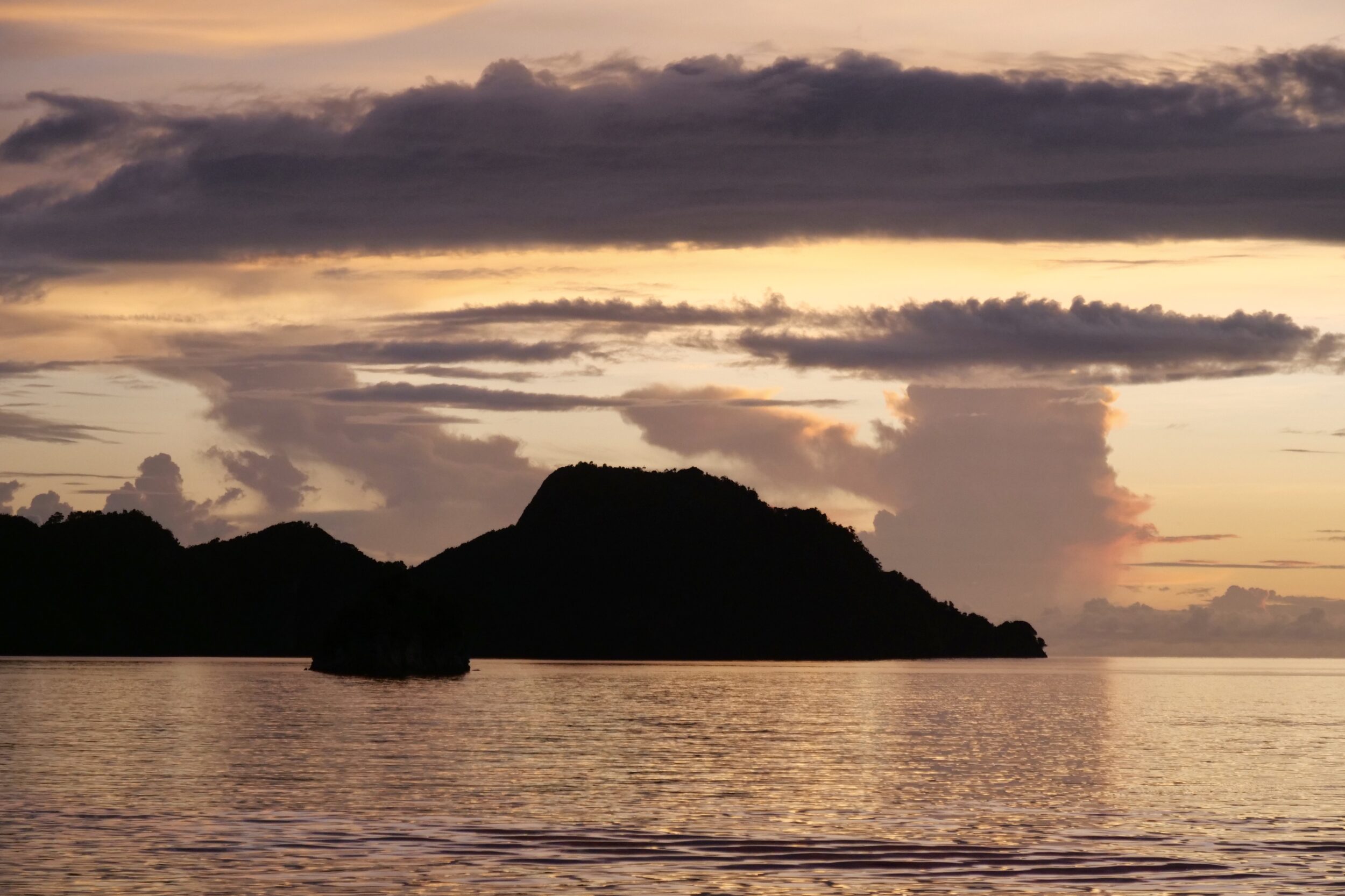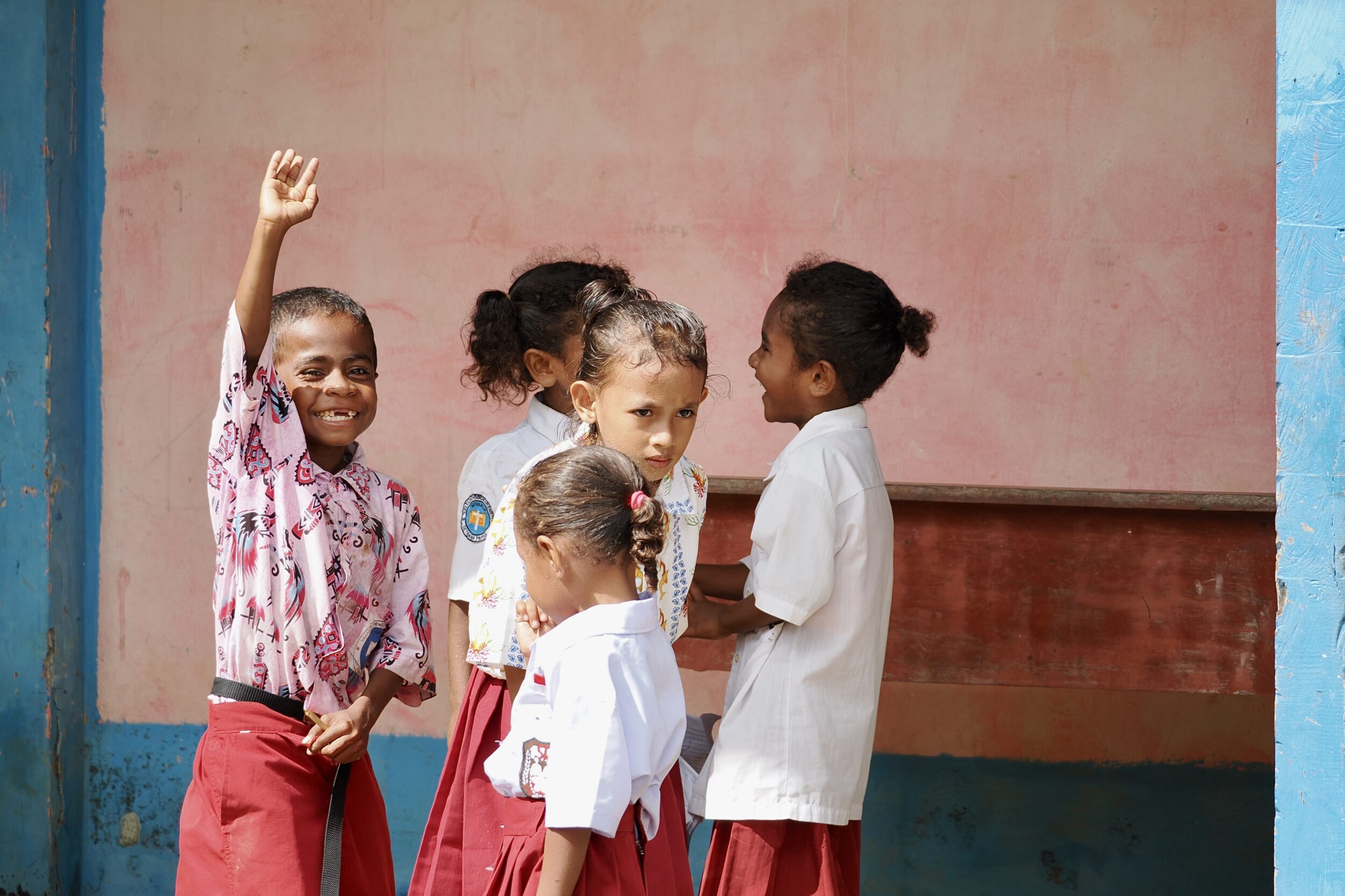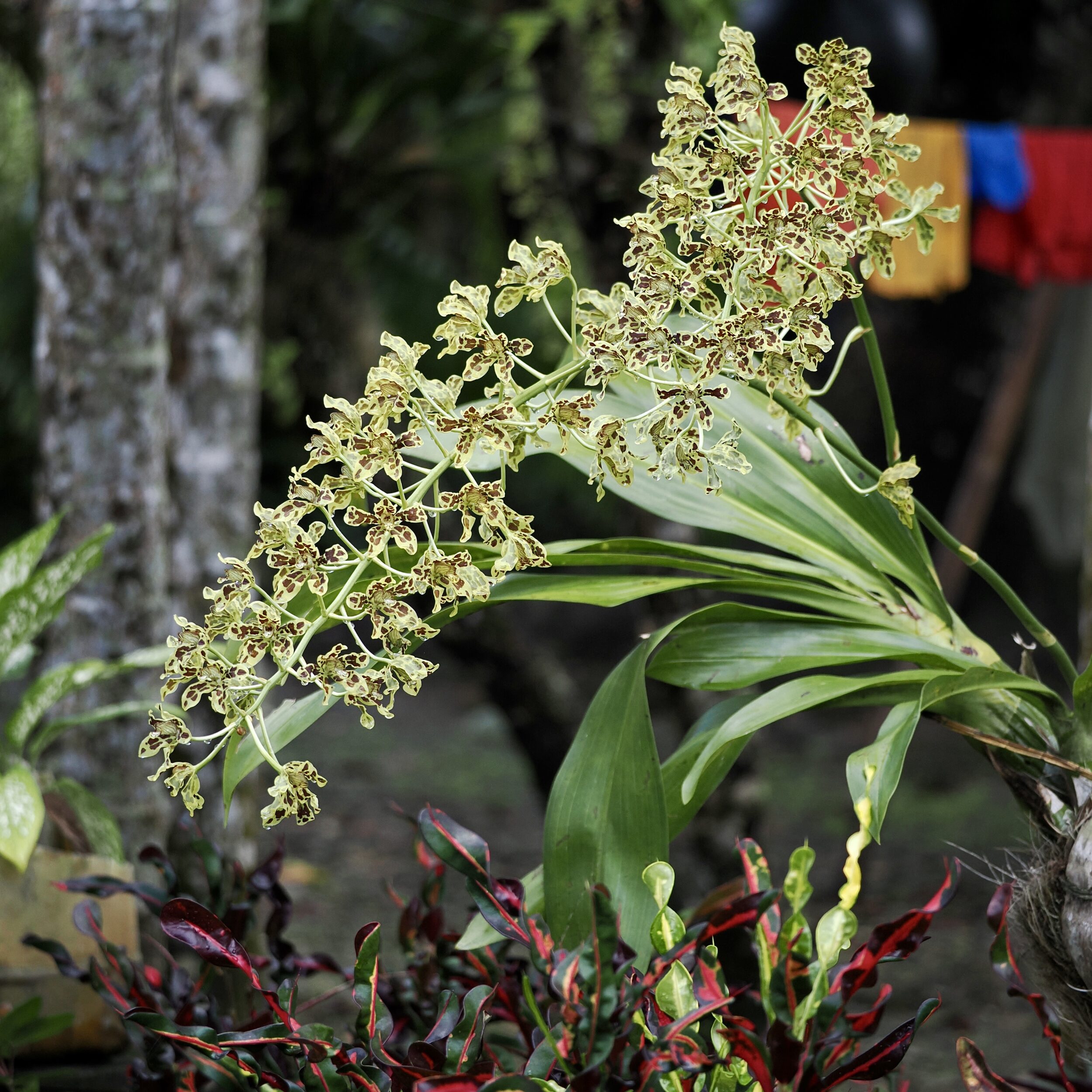This post’s featured image (copyright Doug Spencer) looks as if its location must be somewhere far distant from the place pictured in #16 of this teaser series.
In fact, it was taken on the same day, along the edge of the same island – Misool.
Eight hours had passed since #16’s image was taken, and we had enjoyed several extraordinary experiences in the interim.
Still, at 3.47 pm on 11 October 2024 we were not many kilometres distant from the morning’s “scantily clad” location.
Comments closed